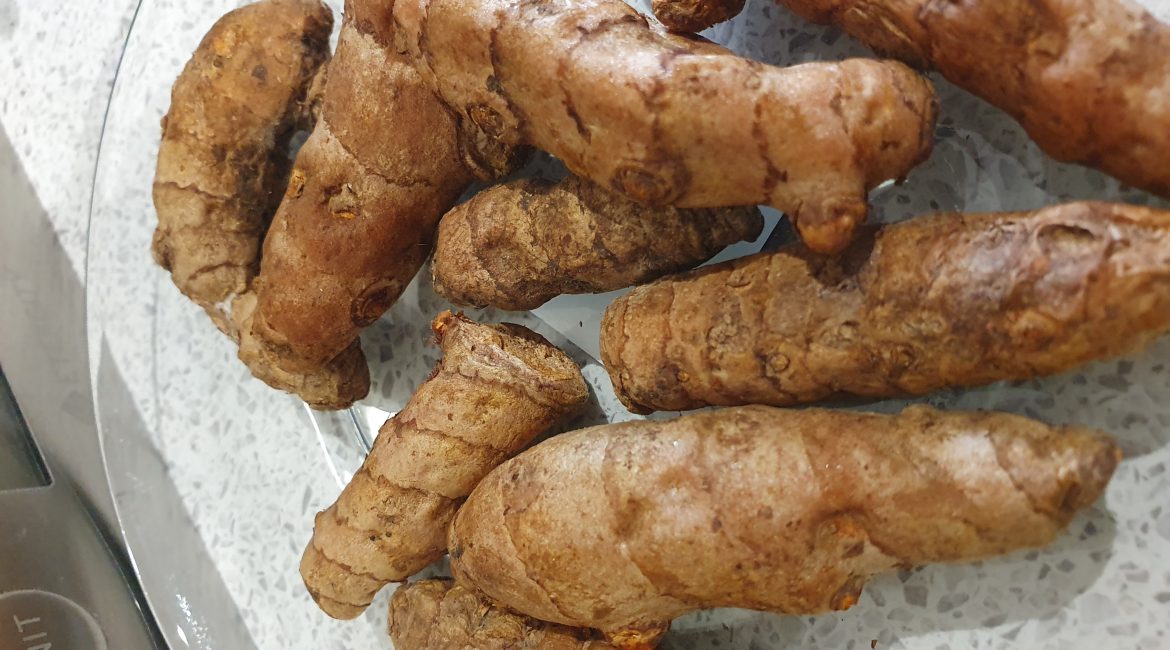Introduction
Ginger, a widely used spice in culinary dishes worldwide, boasts an array of health benefits rooted in its bioactive compound gingerol. By including ginger in our heart-healthy ‘Hearty Red’, anti-inflammatory ‘Fighting Yellow’, and revitalizing ‘Power Green’ health shots, we’ve harnessed the power of ginger to support your path toward well-being.
- Anti-Inflammatory Attributes
Chronic inflammation is known to contribute to various health issues, such as arthritis, diabetes, and heart disease (1). Ginger’s anti-inflammatory properties arise from its high gingerol content, which has been shown to inhibit the production of pro-inflammatory compounds in the body (2). This makes our ‘Fighting Yellow’ blend an ideal choice for those seeking support for their innate defenses.
- Antioxidant Protection
Ginger contains vital antioxidants, which protect our cells from the oxidative damage caused by free radicals (3). This damage can lead to chronic diseases and aging (4). By incorporating ginger into our health shots, we are taking advantage of its significant antioxidant capabilities to help boost your body’s natural defense mechanisms.
- Aids Digestion
Ginger has had a long history of being used to alleviate gastrointestinal issues (5). It has been proven to stimulate bile production and promote healthy digestion. With ginger’s digestive aid properties, our ‘Hearty Red’ and ‘Power Green’ blends work to provide a holistic boost in your daily wellness routine.
Conclusion
Science-backed by numerous studies and an ancient history of use, ginger makes an excellent addition to our health shots. By featuring ginger in our ‘Hearty Red’, ‘Fighting Yellow’, and ‘Power Green’ blends, we aim to create beverages that offer essential health benefits and support your overall well-being.
References:
- Furman, D., Campisi, J., Verdin, E., Carrera-Bastos, P., Targ, S., Franceschi, C., … & Slavich, G. M. (2019). Chronic inflammation in the etiology of disease across the life span. Nature Medicine, 25(12), 1822-1832.
- Dugasani, S., Pichika, M. R., Nadarajah, V. D., Balijepalli, M. K., Tandra, S., & Korlakunta, J. N. (2010). Comparative antioxidant and anti-inflammatory effects of [6]-gingerol, [8]-gingerol, [10]-gingerol and [6]-shogaol. Journal of Ethnopharmacology, 127(2), 515-520.
- Young, H. Y., Liao, J. C., Chang, Y. S., Luo, Y. L., Lu, M. C., & Peng, W. H. (2005). Synergistic effect of ginger and nifedipine on human platelet aggregation: a study in hypertensive patients and normal volunteers. American Journal of Chinese Medicine, 33(4), 545-551.
- Halliwell, B., & Gutteridge, J. (2010). Oxygen toxicity, oxygen radicals, transition metals, and disease. In B. Halliwell & J. Gutteridge (Eds.), Free Radicals in Biology and Medicine (5th ed., pp. 389-424). Oxford, UK: Oxford University Press.
- Hu, M. L., Rayner, C. K., Wu, K. L., Chuah, S. K., Tai, W. C., Chou, Y. P., … & Hu, T. H. (2011). Effect of ginger on gastric motility and symptoms of functional dyspepsia. World Journal of Gastroenterology, 17(1), 105-110.




